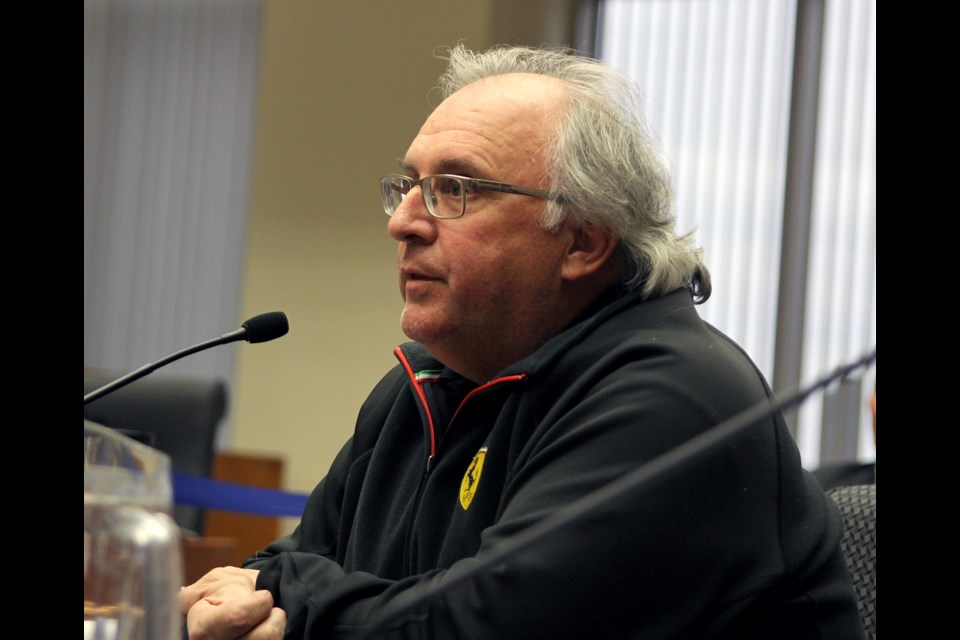Councillors worried the development, which could involve hundreds of homes, would follow a pattern of previous subdivisions that have cost the city more for municipal services than they generate in tax revenue.
Tyler Rizzuto, a planner with Stantec Consulting, outlined a vision Monday for a new development on behalf of developers Louis and Norm Nadin, owners of local Nadin Contracting Ltd.
They hope to eventually secure approval for a new subdivision with around 350 lots, just east of Maplewood Estates off of Mapleward Road, which they also developed.
The project would require a three-kilometre extension of a trunk sanitary sewer west from Parkdale, with the developers offering to pay the capital costs, and the city taking responsibility for the asset.
The trunk line itself would likely take at least five years to come to fruition, with plans for the subdivision moving ahead after that, the Nadins said.
Councillors directed city administration to return with a report on the feasibility of the extension by the end of this year.
“This is a massive private investment for public infrastructure,” said Rizzuto, estimating costs to extend the trunk sewer at around $3 million.
Building the line would require easements on portions of city land, and from 18 private landowners along the route. The Nadins said landowners had been receptive to granting easements through an initial round of consultation.
The presentation came without an accompanying recommendation or report from city administration, raising some eyebrows around the council table.
“I think we’re slightly out of order here – perhaps both could have happened concurrently and it would have been better,” said Mayor Bill Mauro.
“I simply don’t know if this is good planning,” said Coun. Andrew Foulds.
GM of development and emergency services Karen Lewis said administration wanted direction from council before creating a report, which is now due back by December.
Coun. Shelby Ch’ng was concerned the development would go against the city’s desire to infill core areas.
“I’m not sure I’m quite understanding how this will reduce urban sprawl… if we’re essentially creating more subdivisions,” she said. “I need some assurance we’re not saddling a future council [decades] down the road with an infrastructure bill they’re not able to afford.”
The plan would focus development within the city’s urban settlement area, proponents pointed out, saying that aligned with the city’s Official Plan.
“I know you might think it’s sprawl, but once Parkdale’s full, there’s absolutely nowhere else you could create a development on the south side of town,” Norm Nadin told councillors.
“Right now there’s no lands available, and subdivisions are moving to South Neebing – there’s several in the queue,” Rizzuto stated. “Having development in an already developed area would help reduce the demand for houses further out.”
He also countered the idea the site would host only single-family homes.
“We’re not saying this is going to be just a low-density development,” he said.
The city’s experience with previous developments in outlying areas was less than encouraging, said Coun. Cody Fraser, whose Neebing ward contains the proposed development.
Fraser said a rough estimate that the average home in the development could generate $8,000 a year in municipal taxes wasn’t as positive as it might sound for the city.
“I want to be a fan of this project so badly, it’s just that I haven’t seen multi-unit residential development happening in semi-rural areas,” he said. “Every single new development I see is just throwing up large home single-family residences, so that’s my hesitation – that $8,000 a year in taxes doesn’t go very far when you only have 10 lots in a certain area.”
The city’s Official Plan, updated in 2018, sets a density target of 20 units per hectare for new subdivisions, said senior planner Decio Lopes – a standard that will require developers to incorporate more multiple-unit dwellings than in the past.
“It wouldn’t be a typical single-unit subdivision,” he said.
The new development will be similar in character to the Parkdale subdivision, the Nadins said, with sidewalks, potential for multi-unit buildings, and connecting to Parkdale via bike paths.
Coun. Brian McKinnon said the city would need developments like it to meet an anticipated mining boom that could require an additional 1,000 houses in Thunder Bay.
City manager Norm Gale responded the forecast demand was slightly lower than that, and that the city had adequate lot capacity to meet the demand.
“The most recent number I have is 800 homes, and there are more lots [available for development than that],” he said.
According to Norm Nadin, that number included relatively few attractive development opportunities, however.
“In most parts of our town, there’s a lot here, a lot there,” he told councillors. “It’s very seldom you find a parcel of land where you can create a development. As developers, it’s not very lucrative for us to go look for one lot – we always like to at least find something that would resemble 15 or 20 lots.”
City administration previously objected to the developers’ plans for the second phase of its Maplewood development, along Mapleward, because it didn’t connect to city sewer services.
In 2017, council gave that second phase its approval, bucking a recommendation against from city staff over the lack of sewer connectivity.
However, the province appealed the city's zoning decision at the Ontario Municipal Board (now the Local Planning Appeal Tribunal). The OMB ruled in favour of the project, but required the developer to install sewer hookups for potential future connection.
The existing Maplewood homes could connect to sewer services once the trunk line is completed – though Louis Nadin warned that was a process likely to take at least five years.
“I think the greatest hurdle will be the red tape and getting the easements,” he said. “The construction is the easy part.”
